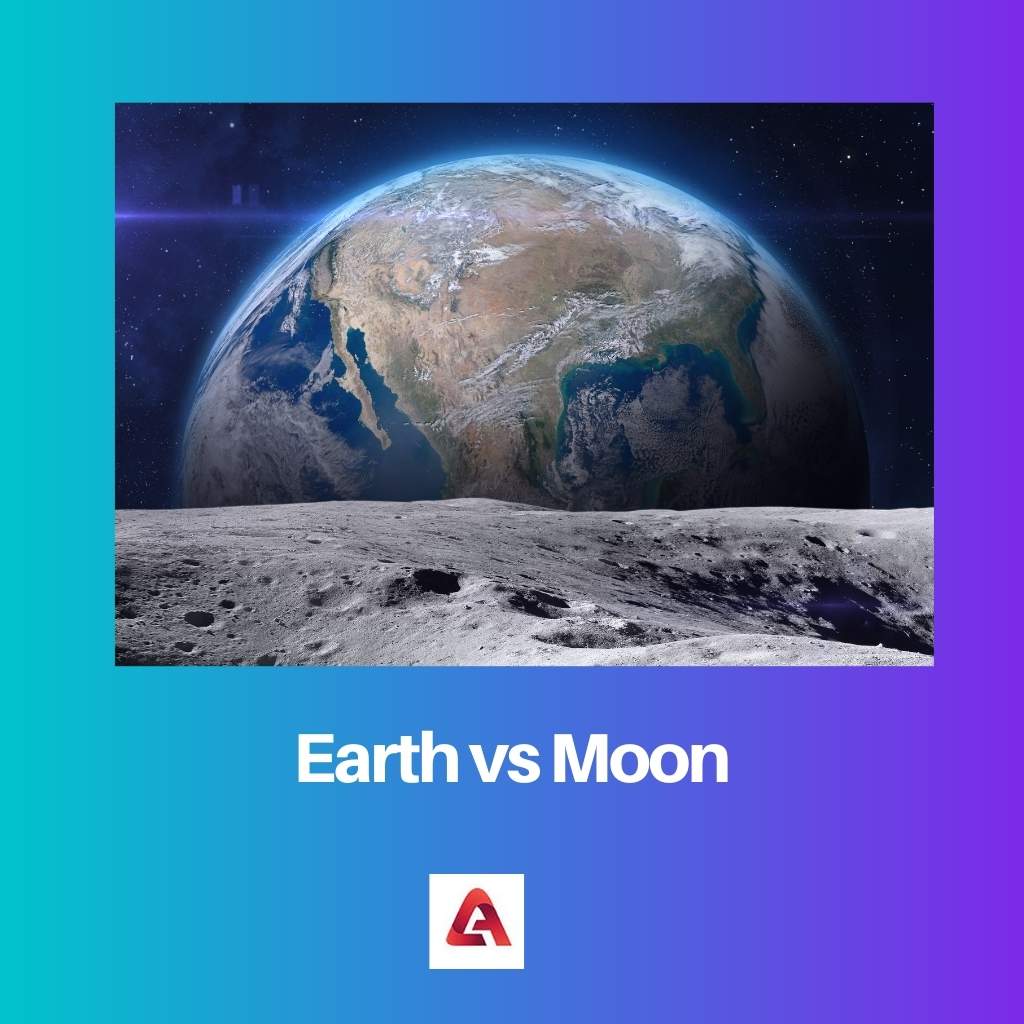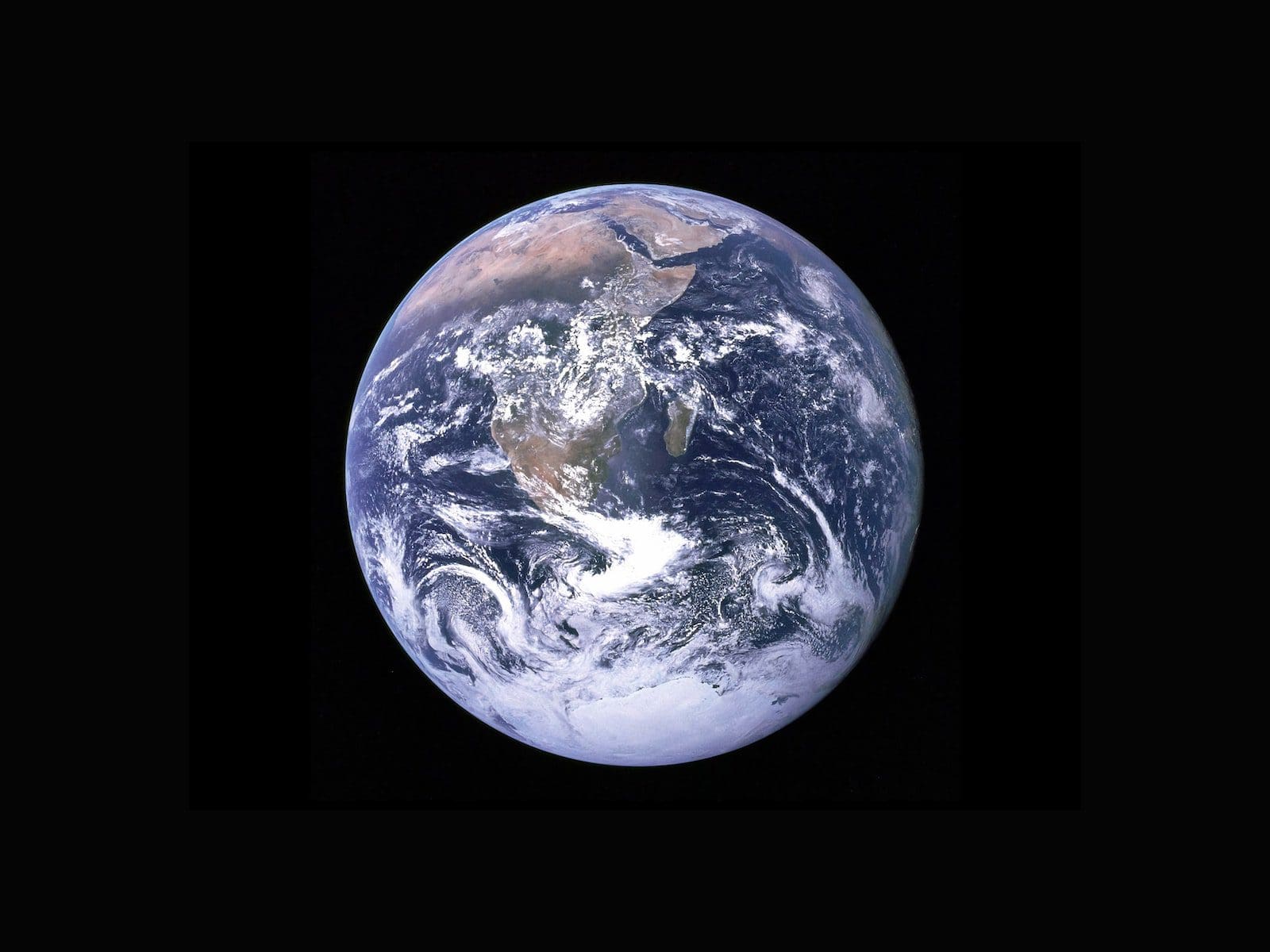Our Universe is filled with many stars, planets, galaxies, natural satellites, asteroids, meteorites, and other objects that have not yet been discovered. In Milky Way Galaxy, the Earth is the only planet that has a favourable living atmosphere for human beings.
The other planets that are present in the solar system have natural satellites that revolve around them. The days and nights are all different on other planets.
The weight, mass, and gravity all differ with respect to the Earth.
Key Takeaways
- Earth, the third planet from the Sun, has a diverse and life-supporting environment, while the Moon, Earth’s natural satellite, features an inhospitable and barren landscape.
- Earth possesses a substantial atmosphere and abundant water resources, both essential to life, whereas the Moon lacks a significant atmosphere and has limited water in ice deposits.
- The Earth’s gravitational pull is stronger than the Moon’s due to its larger size and mass, resulting in higher tides and a greater impact on the movement of celestial bodies.
Earth vs Moon
The Earth is the third planet from the Sun, is approximately 12,742 km in diameter, whose surface is covered mostly by water and land, and is the largest terrestrial planet in the solar system. The Moon is the fifth-largest natural satellite orbiting the Earth and has a diameter of only 3,474 km.

The Earth is the only planet in the solar system with favourable conditions for life. The earth is covered with 30% of the landmasses, and the rest 70% is covered with water, including the oceans, sea, rivers, lakes, etc.
The polar region of the earth is covered with glaciers and ice caps of freshwater.
Moon is the natural satellite of the Earth. Moon is the largest natural satellite in the solar system, with a size of approximately one-quarter of that of the Earth.
The gravity on the moon is one-sixth that of the Earth. Thus a person weighing the same on Earth will be one-sixth time lighter than on the Moon.
There is no magnetic field on the moon, and scientists are finding favourable atmospheric conditions for living on the moon.
Comparison Table
| Parameters of Comparison | Earth | Moon |
|---|---|---|
| What is it? | Planet | Natural Satellite |
| Size | Bigger | Small |
| Radius | 6370 Km | 1740 Km |
| Composition | More heavy elements | Less heavy elements |
| Gravitational Acceleration | 9.8 metre per second square | 1.6 metre per second square |
| Escape Velocity | 11.9 Km per second | 2.4 Km per second |
| Magnetic Field | Present | Absent |
| Atmosphere | Present | Absent |
| Surface | Fast erosion of the surface, made due to the tectonic activity. | The erosion on the surface is slow and is geologically dead. |
| Oxygen and Water | Present | Absent |
What is Earth?
Earth is the only planet with favourable conditions for the existence of life. The earth is covered with 30% of the landmasses, and 70% of the area is covered with water in the form of rivers, oceans, seas, lakes, etc.
These are all the water bodies comprising the hydrosphere. The polar region of the earth is covered with ice caps and glaciers filled with fresh water.
The earth is divided into three parts – core, mantle, and crust. The solid iron core and the liquid inner core together create the magnetic field on the earth’s surface.
The earth’s atmosphere is majorly formed by nitrogen and oxygen gas. There are also several other names used to personify Earth, and they are – Gaia, Terra, Tellus, Globe, and the World.
Earth rotates on its axis because of which the day and night are caused, which is also called rotation. When Earth completes its one complete revolution around the sun, it causes changes in the season.
On earth, one day is equal to the 12 hours of the day and 12 hours of the night.

What is Moon?
Moon is the only satellite of the earth and is naturally present, and among the solar system, it is the largest satellite known. The moon’s size is one-quarter greater than Earth’s, even though it is bigger than any dwarf planet known or discovered.
The gravitational pull of the moon is the major cause of the tides formed in the water bodies.
It is also known as lunar and is considered a planetary object and does not have any atmosphere or hydrosphere properties that support the existence of life on it but still, the discoveries are going on for the same. Also, on the moon’s surface, there is no magnetic field, and the moon’s radius is about 1740 Km.
The one lunar day on the moon is equal to 29 days, 12 hours, and 44 minutes. This is the same period taken by the moon to complete the one revolution of the earth, and this cause one full moon night and one new moon night.

Main Differences Between The Earth and Moon
- The earth is the planet that revolves around the sun, while on the other hand, the moon is the earth’s natural satellite and revolves around it.
- The size of the planet Earth is quite large compared to the size of the moon, which is one-quarter the diameter of the Earth.
- The radius of the earth is 6370 Km, while on the other hand, the radius of the moon is 1740 Km.
- The composition of the earth is made up of heavy elements, while comparatively, on the other hand, the composition of the moon is made up of lighter elements.
- The gravitational acceleration of the planet Earth is about 9.8 meters per second square, while comparatively, on the other hand, the gravitational acceleration of the moon is less than that of the Earth and is about 1.6 meters per second square.
- The velocity required to escape from the earth’s atmosphere is about 11.9 Km per second, while comparatively, on the other hand, the velocity required to escape the moon’s surface is 2.4 Km per second.
- The magnetic field is present on the Earth’s surface, while on the other hand, there is no presence of a magnetic field on the moon.
- The atmospheric condition is present on the earth, while on the moon, there is no presence of the atmosphere.
- The erosion of Earth’s surface erodes faster and is made by the various tectonic activity, while on the other hand, there is very slow erosion on the surface of the moon, and the surface is geologically dead.
- The presence of oxygen and water on the earth’s surface is identifiable, while comparatively, on the other hand, on the surface of the moon, there is no presence of oxygen and water.

References
- https://agupubs.onlinelibrary.wiley.com/doi/abs/10.1029/JB085iB05p02531
- https://www.sciencedirect.com/science/article/abs/pii/S0012821X17302145
- http://caeno.org/pdf/Newton_Ptolemy%20Babylonian%20eclipses.pdf
- https://www.tandfonline.com/doi/abs/10.1080/09500690119306

The detailed explanations of the Earth’s division into core, mantle, and crust, the formation of its magnetic field, and the composition of its atmosphere provide valuable insights into the complex dynamics that make our planet unique. It’s a compelling exploration of Earth’s geological and atmospheric processes.
Indeed, the in-depth examination of Earth’s geological and atmospheric properties enhances our understanding of the fundamental elements that sustain life on our planet and contribute to its environmental diversity.
I couldn’t agree more. The detailed explanations offer a comprehensive perspective on Earth’s geological and atmospheric complexities, shedding light on the factors that make our planet a suitable habitat for diverse forms of life.
The detailed descriptions of Earth’s landmasses, water bodies, and atmospheric composition, in contrast to the Moon’s lack of these features, highlight the unique environmental conditions that make our planet habitable. It’s a fascinating exploration of the factors that sustain life on Earth.
Absolutely, the comprehensive overview of Earth’s characteristics and the significant differences with the Moon offers a compelling perspective on the environmental dynamics that support life on our planet.
The comparison table provides a clear and concise overview of the key differences between Earth and the Moon, including their size, composition, gravitational acceleration, and presence of a magnetic field. It’s an excellent summary of their distinct properties.
I completely agree. The structured comparison table effectively highlights the unique characteristics and fundamental differences between Earth and the Moon in a comprehensive and informative manner.
I found the detailed comparison table to be incredibly enlightening. It offers a clear and systematic analysis of the diverse properties and attributes of Earth and the Moon, providing valuable insights into their contrasting natures.
The detailed explanation of the Earth’s rotation, its impact on day and night, and the changes in seasons, offers a fascinating insight into the dynamic interplay between Earth and the Sun. It’s a thought-provoking exploration of the astronomical phenomena that shape our planet’s environment.
Agreed. The comprehensive overview of Earth’s rotational dynamics and its influence on environmental changes provides valuable perspectives on the celestial interactions that define our planet’s unique conditions.
The detailed explanation of the Earth and the Moon’s characteristics, including size, gravitational acceleration, composition, and atmosphere, provides valuable insight into their fundamental differences. It’s fascinating to compare their properties and understand the significance of these distinctions.
I couldn’t agree more. This comprehensive comparison offers a deeper understanding of the Earth-Moon relationship and how each body contributes to the dynamics of our solar system.
The comprehensive description of the Moon’s properties, including its lack of atmosphere, hydrosphere, and magnetic field, as well as its relatively small size and radius, underscores the stark contrast between the environmental conditions on Earth and the Moon. It’s a thought-provoking comparison.
Absolutely, the detailed analysis of the Moon’s properties provides a compelling comparison with Earth, offering valuable insights into the unique attributes that differentiate our planet from its natural satellite.
The distinct geological and environmental differences between Earth and the Moon, such as fast surface erosion and tectonic activity on Earth, compared to the slow erosion and geologically dead nature of the Moon, provide valuable insights into the contrasting dynamics of these celestial bodies.
The comparison of Earth and the Moon’s geological characteristics presents a thought-provoking analysis of their distinct landscapes and the underlying forces that shape their environments. It’s truly intriguing.
Agreed. The geological disparities between Earth and the Moon offer a fascinating glimpse into the unique natural processes that shape these celestial bodies and influence their environmental conditions.
The discussion of Earth’s unique properties, such as its diverse environment, substantial atmosphere, and abundant water resources, sheds light on the factors that make our planet suitable for life. The absence of a significant atmosphere and limited water on the Moon underscores its inhospitable nature.
Indeed, the contrast between Earth and the Moon highlights the remarkable conditions that support life on our planet while emphasizing the challenges of sustaining life on other celestial bodies.
Absolutely, the unique characteristics of Earth and the Moon offer valuable insights into the conditions necessary for life and the distinct features that define each celestial body.
The detailed comparison of Earth and the Moon provides an illuminating analysis of the fundamental differences in size, gravitational acceleration, composition, and geological characteristics. It’s a compelling exploration of the contrasting dynamics of these celestial bodies and their distinct environmental properties.
Absolutely, the detailed comparison offers valuable insights into the diverse properties and geological dynamics of Earth and the Moon, enhancing our understanding of their contrasting environmental conditions.
The comparison between the Earth and the Moon is truly fascinating. It’s interesting to see how different they are in terms of gravitational acceleration, atmosphere, magnetic field, and the erosion of their surfaces due to tectonic activity. The fact that Earth is the only planet in our solar system with favourable conditions for life is truly remarkable.
Absolutely, the uniqueness of Earth’s diverse environment sets it apart from the other celestial bodies in our solar system.